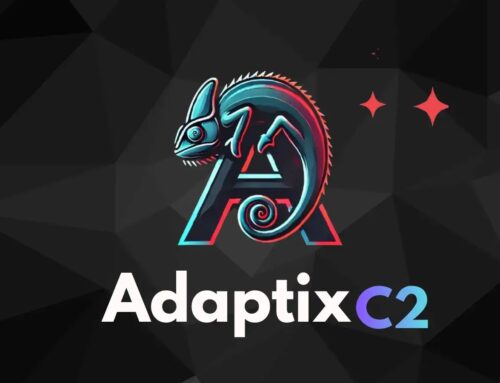
Arch Linux Confirms Week-Long DDoS Attack Disrupted its Website, Repository, and Forums
The digital infrastructure underpinning essential open-source projects is a constant target for malicious actors. Recently, the Arch Linux Project, a cornerstone of the Linux community, became the latest victim, confirming a prolonged Distributed Denial-of-Service (DDoS) attack that crippled its vital services for over a week. This incident serves as a stark reminder of the persistent threats faced by even the most robust platforms and underscores the critical need for resilient cybersecurity defenses.
Arch Linux Hit by Week-Long DDoS Barrage
For more than seven days, the Arch Linux Project endured a sustained DDoS attack, severely disrupting access to its core infrastructure. This sophisticated assault targeted critical resources, including the main Arch Linux website, the indispensable Arch User Repository (AUR), and its community forums. Users worldwide experienced significant downtime and access issues, impacting their ability to download packages, contribute to the community, and access essential documentation.
DDoS attacks overwhelm a target server, service, or network with a flood of internet traffic, originating from multiple compromised computer systems. The objective is to exhaust the target’s resources, rendering it unavailable to legitimate users. In the case of Arch Linux, the prolonged nature of the attack suggests a determined adversary aiming for maximum disruption.
Impact on the Arch Linux Ecosystem
The ramifications of such an extended outage on a project like Arch Linux are far-reaching. The AUR, in particular, is a vital component for many Arch users, providing a community-maintained collection of software that complements the official repositories. Its unavailability directly impacted users’ ability to install and update a wide range of applications. Furthermore, the disruption to the main website and forums hindered new user onboarding, troubleshooting efforts, and general community engagement.
This incident highlights the interconnectedness of open-source ecosystems. A successful attack on a foundational project like Arch Linux can have a ripple effect across countless personal systems, development environments, and even production servers that rely on its packages and updates.
Understanding DDoS Attack Mechanisms
DDoS attacks typically leverage botnets, networks of compromised computers controlled by a single attacker. These botnets are then instructed to send a massive volume of requests or packets to the target, saturating its bandwidth or exhausting its computing resources. Common types of DDoS attacks include:
- Volume-based Attacks: These aim to saturate the bandwidth of the target, measured in bits per second. Examples include UDP floods, ICMP floods, and other spoofed-packet floods.
- Protocol Attacks: These consume server resources or intermediary communication equipment resources, measured in packets per second. Examples include SYN floods, fragmented packet attacks, and Smurf DDoS.
- Application-Layer Attacks: These target the specific application layer, measured in requests per second. Examples include HTTP floods, Slowloris, and various types of HTTP GET/POST floods. These are often the most difficult to detect and mitigate due to their resemblance to legitimate traffic.
While the specific vector used against Arch Linux has not been publicly detailed, the week-long duration suggests a persistent and possibly multi-vector approach.
Remediation and Mitigation Strategies for DDoS
Defending against DDoS attacks requires a multi-layered approach. For organizations and projects facing similar threats, the following strategies are crucial:
- DDoS Mitigation Services: Companies like Cloudflare, Akamai, and others specialize in DDoS protection. They operate large global networks that can absorb and filter malicious traffic before it reaches the origin server.
- Increased Bandwidth: While not a standalone solution, having ample bandwidth can help absorb smaller-scale attacks.
- Rate Limiting: Implementing rate limiting on web servers and proxies can help prevent a single IP address or a small group of IPs from overwhelming the server with requests.
- Geoblocking and IP Blacklisting: Blocking traffic from suspicious geographical regions or blacklisting known malicious IP addresses can reduce the attack surface.
- Web Application Firewalls (WAFs): WAFs can help protect against application-layer DDoS attacks by filtering malicious HTTP requests.
- Network Hardware Configuration: Proper configuration of firewalls, routers, and load balancers can help drop malformed packets and distribute traffic efficiently.
- Incident Response Plan: Having a well-defined incident response plan for DDoS attacks is paramount. This includes communication protocols, steps for mitigation, and post-attack analysis.
Tools for DDoS Mitigation and Analysis
| Tool Name | Purpose | Link |
|---|---|---|
| Cloudflare | Comprehensive DDoS protection, CDN, and WAF services. | https://www.cloudflare.com/ |
| Akamai Prolexic | Dedicated DDoS protection against large-scale, multi-vector attacks. | https://www.akamai.com/products/prolexic-ddos-protection |
| Azure DDoS Protection | Integrated DDoS protection for Azure-hosted applications. | https://azure.microsoft.com/en-us/solutions/ddos-protection/ |
| AWS Shield | Managed DDoS protection service for AWS resources. | https://aws.amazon.com/shield/ |
| Wireshark | Network protocol analyzer for identifying unusual traffic patterns during an attack. | https://www.wireshark.org/ |
Key Takeaways from the Arch Linux Attack
The Arch Linux DDoS attack underscores several critical points for anyone managing online infrastructure:
- Vulnerability of Open-Source Infrastructure: Even widely-used and well-maintained open-source projects are not immune to sophisticated cyberattacks. Their public-facing nature can make them attractive targets.
- Importance of Robust DDoS Protection: Proactive measures and specialized DDoS mitigation services are essential for maintaining service availability. Relying solely on internal network defenses is often insufficient against determined attackers.
- Community Resilience: While inconvenient, the Arch Linux community’s response and the project’s dedication to restoring services demonstrate the resilience inherent in open-source models.
- Ongoing Threat Landscape: DDoS remains a prevalent and effective attack vector. Organizations must continuously assess their threat landscape and adapt their defenses.
The incident with Arch Linux serves as a potent reminder that digital vigilance is not a one-time effort but an ongoing commitment to securing critical online resources.





